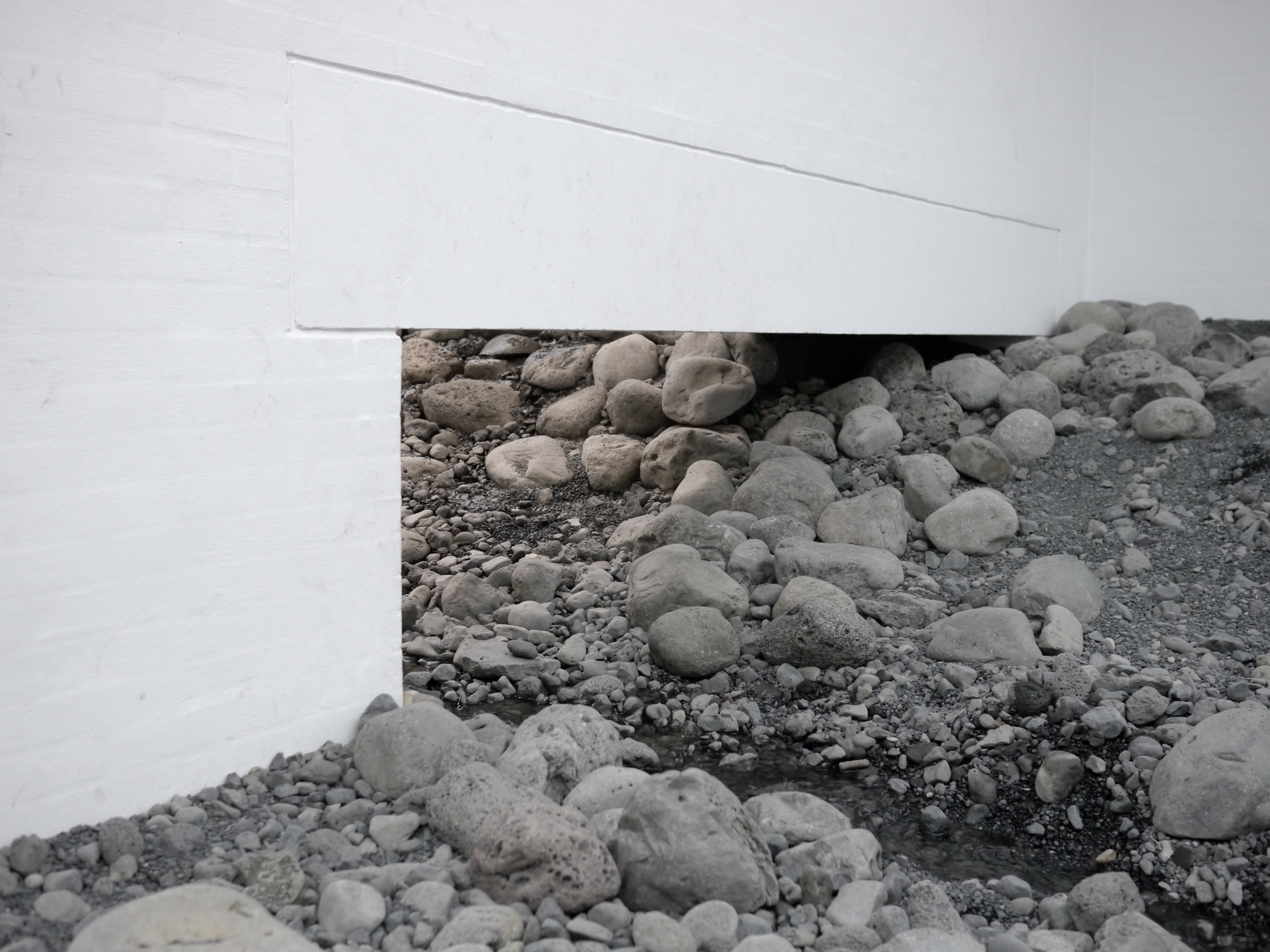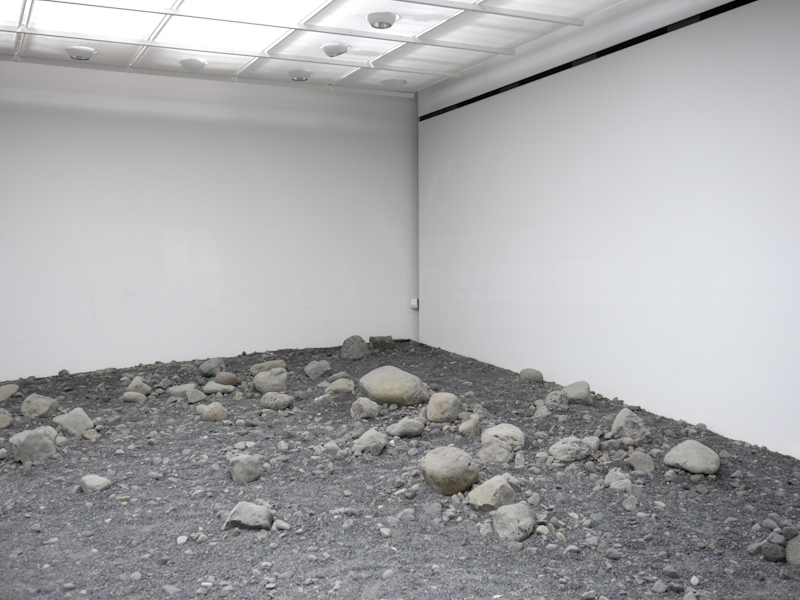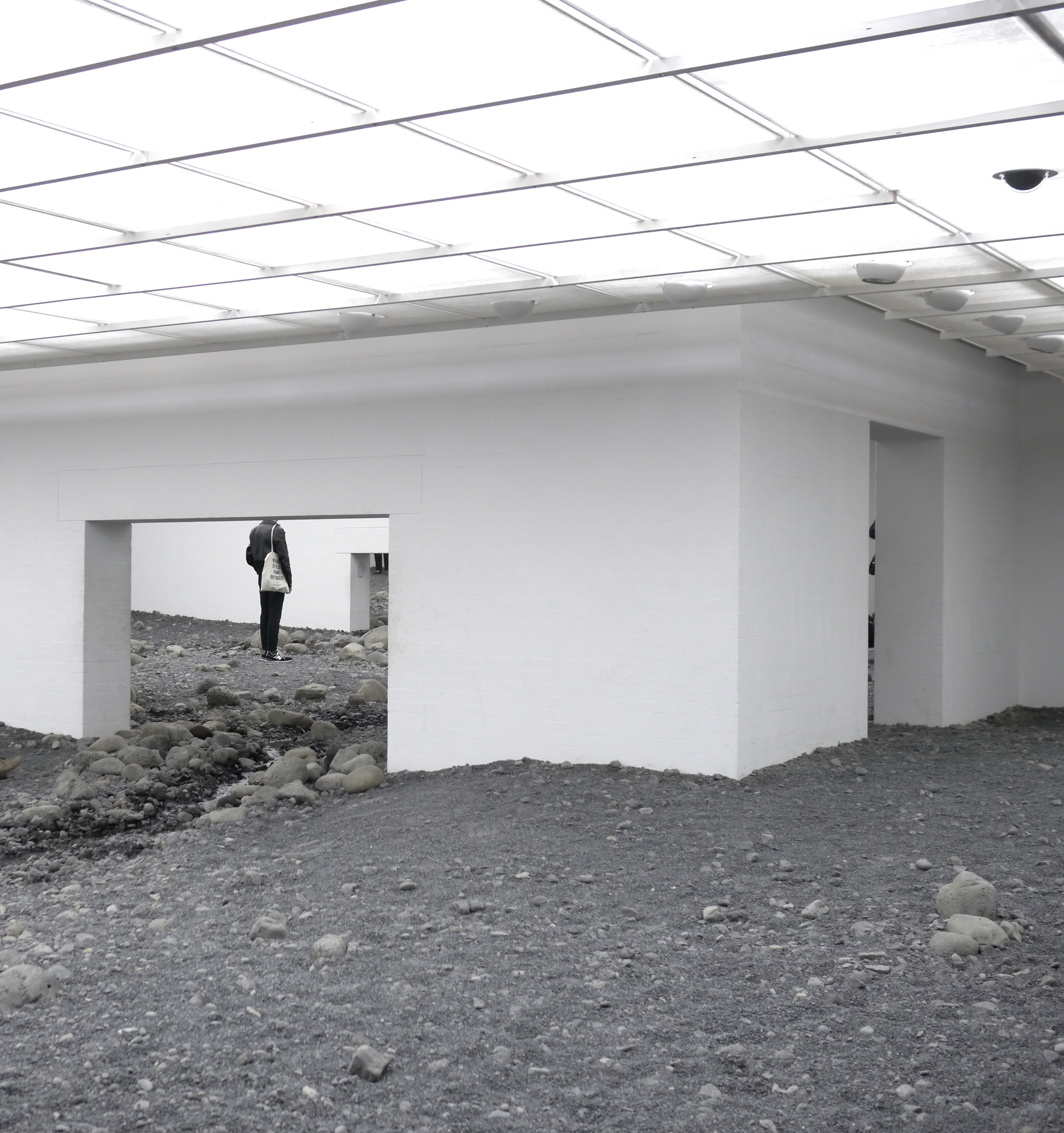Following the grey and damp Riverbed through the bright white rooms, searching for its source, I can’t shake the feeling of walking through an inverted version of Superstudio’s landscape collages.
Perhaps it’s just an odd association caused by the museum’s suspended ceiling grid and the bright white walls of the gallery enveloping Olafur Eliasson’s grey and dank landscape, and perhaps it’s not pertinent, but at first glance they just seem perfectly diametrical. Whereas Superstudio projected their ever-expanding Continuous Monument through cities and vast plains, to a point beyond the horizon, Riverbed is a confined landscape without horizon and, unlike the analytical and perhaps cold logic of Superstudio’s vision, it is an totally immersive experience.
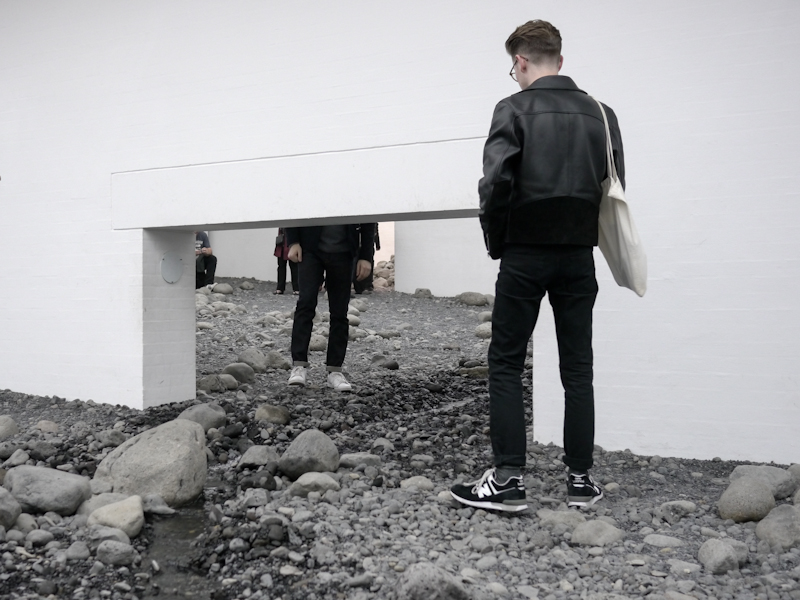
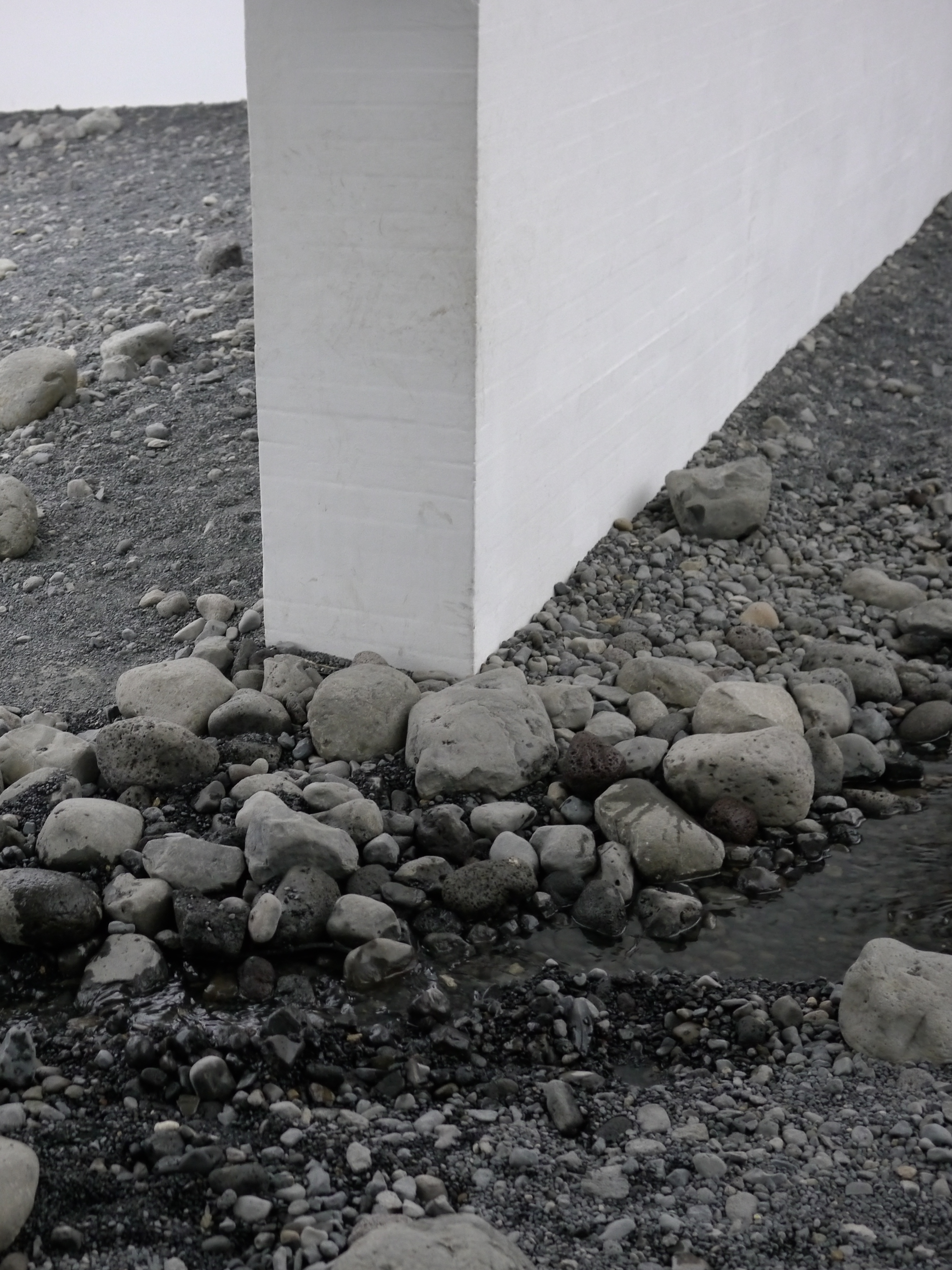
Riverbed is, perhaps somewhat surprisingly, Eliasson’s first solo show at Lousiana and the massive installation fills the entire south wing of the museum with Icelandic volcanic rock in a gentle upward slope. A small stream of water flows downhill throughout the galleries, guiding the visitor towards its source at the top. The elements are natural but the landscape is artificial, a highly controlled and inhospitable environment. Like many Eliasson’s installations, Riverbed is an open-ended work where the participation and experience of the visitor are central components. And because this experience is so highly peculiar and immersive, the visitor becomes susceptible to Riverbed’s phenomenological speculations on the natural and the artificial and of our perception of nature and civilization. Other lines of query could go into the concepts of time and duration, architecture and nature, environmental concerns and the list goes on. But because Riverbed, like so many of Eliassons’s works, translates poorly into words, we would advice you to go and experience it for yourself before it’s too late.
